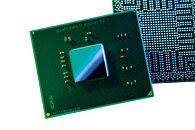
Another Day, Another Intel Core i9-12900K Benchmark Leak
Remember that Core i9-12900K CPU-Z leak from last week? It had the multi-threaded score blurred out and now we know why. A new CPU-Z screenshot has shown up on Twitter and although the single threaded score is still beating the AMD Ryzen 5950X baseline single core score by a comfortable margin, it's behind when we're switching to the multi-threaded score.
It shouldn't really come as a surprise that eight big and eight small CPU cores doesn't beat AMD's 16 big cores, but this was apparently expected by some. This is not saying that Intel doesn't get close as you can see, but it's also worth keeping in mind that Intel runs on 24 threads vs. AMD's 32 threads. The Core i9-12900K is said to be running on stock clocks, but no other information was provided. Once again, take this for what it is while we wait for the actual launch date and proper benchmarks.
It shouldn't really come as a surprise that eight big and eight small CPU cores doesn't beat AMD's 16 big cores, but this was apparently expected by some. This is not saying that Intel doesn't get close as you can see, but it's also worth keeping in mind that Intel runs on 24 threads vs. AMD's 32 threads. The Core i9-12900K is said to be running on stock clocks, but no other information was provided. Once again, take this for what it is while we wait for the actual launch date and proper benchmarks.

















































